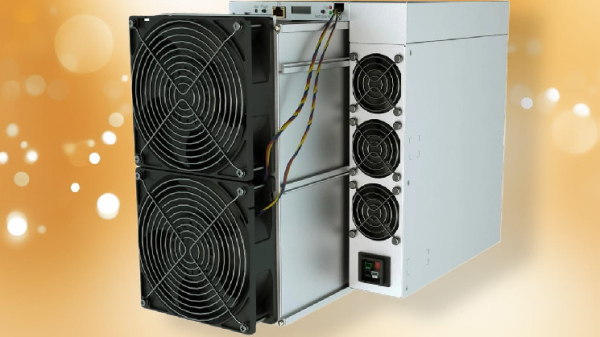Kaspa and Alephium Mining Gain Traction as Bitcoin’s Hashprice Remains Low

While Bitcoin is widely recognized as a proof-of-work (PoW) network, it’s not necessarily the most profitable PoW asset to mine. With Bitcoin’s hashprice being relatively low, miners have been increasingly turning their attention to mining alephium (ALPH) and kaspa (KAS). These two digital currencies currently offer the highest profitability for miners, according to the latest mining data.
Crypto Miners Explore New Frontiers
As we approach the final four months of 2024, bitcoin’s SHA256 consensus algorithm ranks as the fourth most profitable to mine. On Aug. 21, 2024, the most lucrative bitcoin mining rig is Microbt’s Whatsminer M63S, generating $9.08 per day with its 390 terahash per second (TH/s) of hashpower. The algorithms outperforming SHA256 today include Blake3, Kheavyhash, and Scrypt.
Presently, according to asicminervalue.com, a Blake3-powered Bitmain ALPH miner AL1, which delivers 15.6 TH/s and boasts an efficiency rating of 225 joules per terahash (J/T), can yield $308 per day after accounting for $0.04 per kilowatt hour (kWh) in electricity costs. Blake3 also supports the Decred network, but most of its hashing power is directed toward Alephium.
Alephium is a layer one (L1) blockchain that introduces a distinct consensus mechanism known as proof-of-less-work (PoLW), an adaptation of the traditional PoW model. On Feb. 20, 2024, Alephium’s hashrate was cruising at 500.8 terahash per second (TH/s), but today, it’s racing ahead at 2,850 TH/s, which translates to a solid 2.85 petahash per second (PH/s).
Over the past year, ALPH has risen by 586% against the U.S. dollar, hitting an all-time high (ATH) of $3.86 on Feb. 27, 2024. Currently, on Aug. 21, ALPH is trading around 59% below that peak, sitting at $1.53 per coin. Bitmain is set to roll out the AL1 Pro miner in Sept., boasting a hashpower of 16.6 TH/s, which translates to a potential $327 in daily earnings. Although this powerhouse has yet to hit the shelves, the initial AL1 series model is priced at $41,800 per unit.
Next up in profitability is Bitmain’s KS5 Pro, which churns out around 21 TH/s of Kheavyhash hashpower. As of Aug. 20, data reveals that this Kaspa network miner can generate approximately $26.48 per day, assuming electricity costs of $0.04 per kWh. Kaspa, a PoW coin, uses the Ghostdag protocol. Unlike conventional blockchains, Ghostdag allows parallel block creation to coexist rather than being discarded, aligning them in consensus.
Kaspa’s hashrate has also reached an all-time high, currently hovering around 824 PH/s—significantly outpacing Alephium’s. Over the past year, KAS, the native token of the Kaspa blockchain, has climbed 283%. Alongside the Antminer Pro, the original KS5 model still pulls in about $25 daily, according to the latest metrics. Following the AL1s and KS5s, Bitmain’s Antminer L9 Scrypt miner remains more profitable than the leading BTC miners today.
The L9 pulls in around $15.96 per day, while the Whatsminer M63S brings in $9.08. L9 units offer the flexibility to mine either DOGE or LTC, based on user choice. As the crypto mining world rapidly shifts, the quest for profitability heats up, with miners embracing fresh technologies and networks. While most major miners haven’t officially announced ventures into other coins, publicly traded bitcoin miner MARA disclosed it was mining KAS. In today’s BTC mining landscape, it’s highly probable others are also exploring alternative coins.
